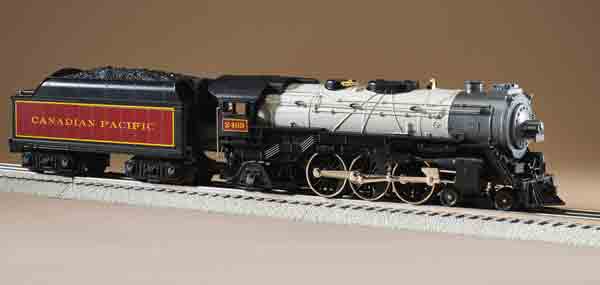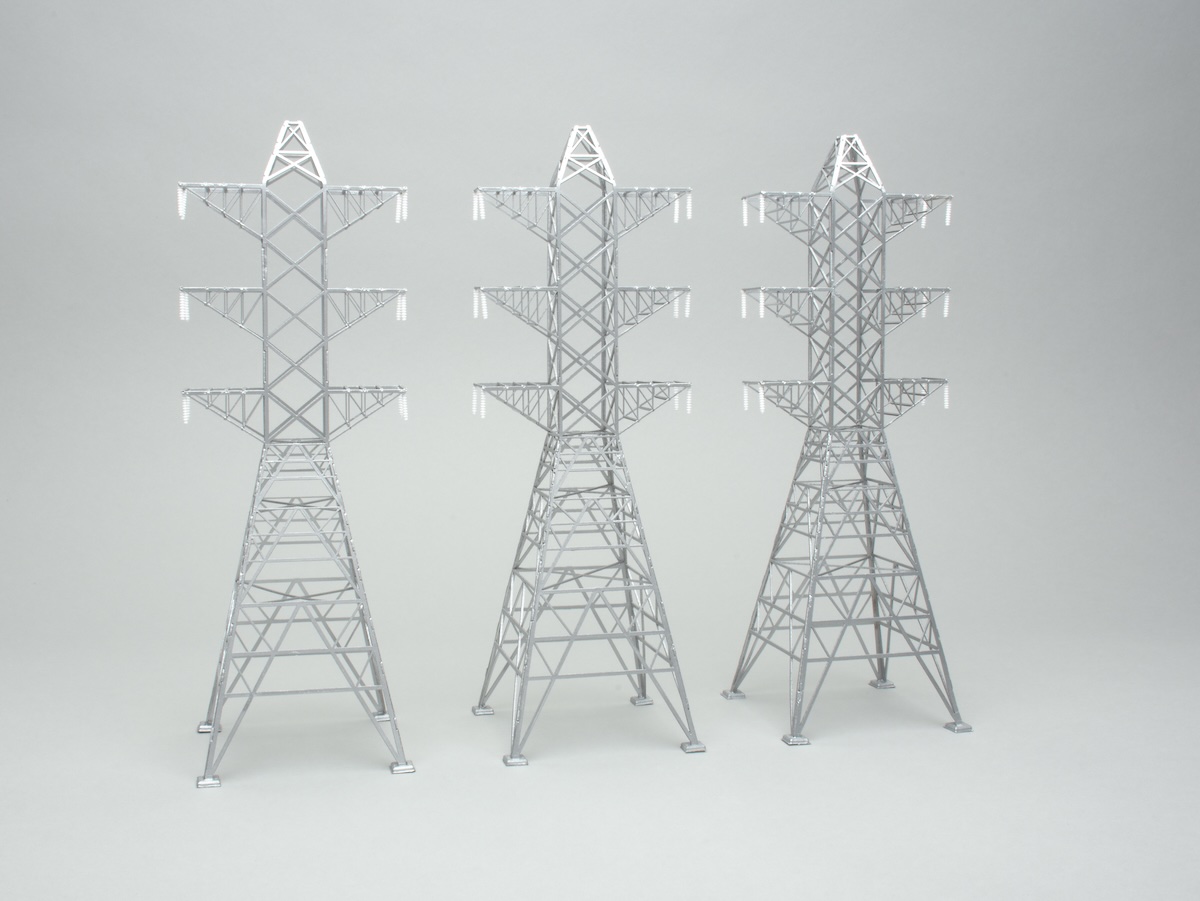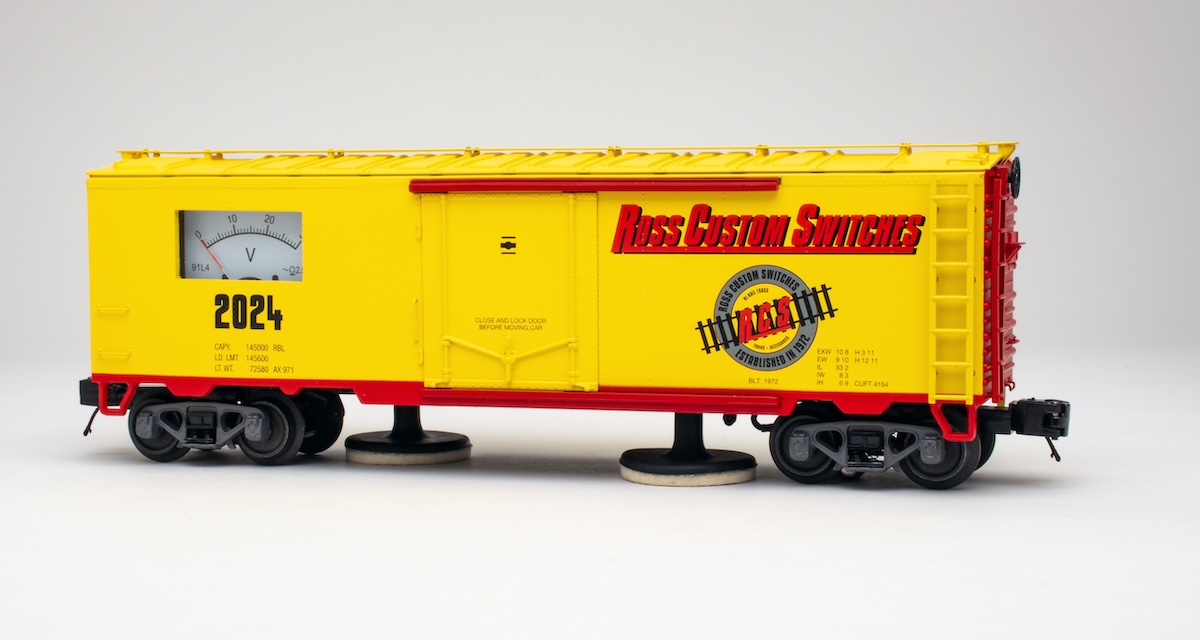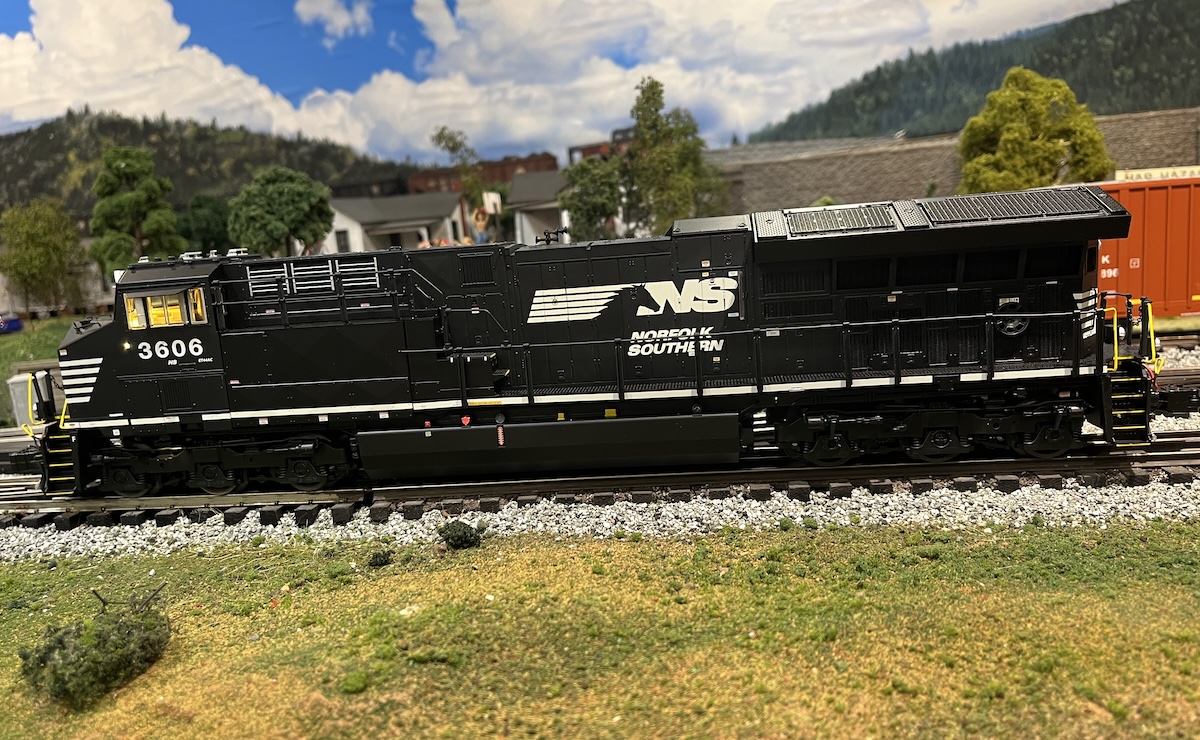The “Plus” in LionChief Plus means you can operate the locomotive via the included handheld remote (with 18 volts of track power) or use it on a conventional transformer-controlled O gauge layout. In addition, this steamer has a feature or two the basic LionChief locomotives don’t. But let’s start out with a reminder of LionChief and the controller.
LionChief Plus is a digital toe-in-the-water for people interested in exploring command control. You can operate a LionChief Plus locomotive and its paired remote controller at a steady 18 volts to deliver the basic command functions without needing a layover template or memorizing keystroke combinations.
You get rapidly executed commands and the benefit of much better low-speed performance than the norm in basic conventional operation.
LionChief Plus gives you the additional ability of conventional running without the handheld unit – you have two modes of operation.
Track power sources
LionChief Plus locomotives do not come with a power supply. For wireless handheld command operation you need to provide a transformer that can supply a steady 18 volts to the track. If you wish to operate in conventional mode using transformer controls, set the locomotive’s Transformer/Remote switch to Transformer and you’re all ready.
The LionChief Plus remote
The handheld controller functions are basic and easy to understand.
On/Off: A simple switch placed on the right side of the controller.
Throttle: It looks like a steam locomotive wheel. There is a handle/pointer in the middle of the wheel, indicating where the “zero,” or start point, is for speed.
Rotate the control wheel to the right and the locomotive goes forward; to the left and it goes in reverse.
Speed-indicator light: The red LED light remains on during operation and flashes during train operation. The flashing varies according to how fast the locomotive is traveling.
Announcements: This triggers train announcements.
Whistle: This triggers the horn or whistle.
Bell button: This triggers the bell.
The locomotive
This Canadian Pacific 4-6-2 Pacific is a nice rendering of a postwar-style steamer using a traditionally sized die-cast metal boiler. The tooling is very good, clearly and crisply rendering detail points large and small. The gray-jacketed boiler on our sample nicely showed off the sand lines, boiler bands, rivets, and the like.
The boiler top has an add-on bell and whistle, and an add-on handrail runs the length of the boiler.
The cab has add-on grab irons. The interior is nicely executed, with seated engineer and fireman figures and a firebox backhead with representations of gauges and pipes. There are cast-in “open” firebox doors showcasing the locomotive’s flickering red firebox glow feature. Controls for operating mode, chuff, and smoke unit are on the underside of the cab.
The sound system is in the tender, and electrical connection is made through the drawbar, which easily snaps into place. The tender is a solid rig also made of die-cast metal. There is a cast-in coal load and an add-on rail along the rear deck.
As the saying goes about clothes making the man, the execution of the paint scheme on this locomotive is remarkable and the Canadian Pacific decoration is truly classy. It would almost be a shame to see this engine hauling freight, because the paint job calls for a long line of the CP’s maroon heavyweight passenger cars!
On the test track
This model has a few operational capabilities that set it apart from a more basic locomotive. Here are some of the features:
Smoke unit: The fan-driven smoke unit runs whenever the track is powered. Performance is, of course, best when 18 volts are flowing to the track. Be sure to keep fluid in the smoke unit if you are operating it. Letting it continue to run while empty will damage the device.
With the fan-driven smoke unit operating at 18 volts, there is a nice, steady plume of the white stuff.
Electro coupler: The coil-coupler opening is triggered by pressing the whistle/coupler button twice within two seconds. The coil coupler can be activated only when the transformer/remote switch is in the remote position.
Cab: The cab features crew figures, a detailed backhead, and firebox glow. The firebox gives off a flickering light. Best viewed in dimmer light, it can still be seen in normal room lighting.
RailSounds RC: The sound package features locomotive chuffing and background sounds as well as announcements. The announcements change depending on whether the locomotive is sitting or running for fewer or more than 30 seconds or in conventional mode sitting longer than 15 seconds or running less than 7 seconds. In command mode you use the sound button to trigger the announcements, while in conventional mode you use the horn/whistle button.
The locomotive’s sound was outstanding. The deep chuffs and wide ranging tones of the other sound effects are clear and distinct.
Sound level: You can adjust the volume level with the remote by placing it on a flat surface and pressing the whistle and bell buttons simultaneously.
After three seconds the remote’s red light-emitting diode begins to flash. While continuing to hold the whistle/bell buttons down, turn the speed knob up or down to raise or lower the volume. When you get it where you want it, release the buttons.
Operation: The locomotive was smooth running in both command and conventional modes. The slow speeds were excellent, and the locomotive’s Odyssey II speed control allows you to set and maintain the pace you wish.
Our conventional low-speed average was 4.48 miles per hour, and the command-mode low-speed average was 4.04 miles per hour.
The difference in the speed wasn’t enough for me to notice, and the speed control feature worked as well in “old school” conventional transformer mode as it did using the LionChief Plus remote.
The high-speed average was 73.9 miles per hour. Drawbar pull was 1 pound, 8 ounces.
Operation of the handheld controller was flawless. Speed control with the simple knob was just as effective as the speed controller on any high-dollar, remote and the constant speed feature was excellent in both conventional and command modes.
The Lionel LionChief Plus delivers a superbly decorated steam locomotive that accesses the benefits of the command-control world. Additionally, with a modern motor and speed control, it delivers enhanced performance when operating ‘Old School’ with conventional transformer control.















Will all due respect to Lionel Trains, I have been advising them that their Canadian Pacific Railway (CPR) paint schemes have been inaccurate. From Lionel's first CPR offering, the EMD F3A-A set, to their latest 4-6-2, the livery is incorrect. They have re-introduced the CPR F3A-A set with the addition of B-Units, all inaccurately. The livery on their CPR 4-6-2 # 2469 is quite nice, but why go to all that trouble, and also produce an inaccurate livery. It would not cost anything additional to paint her correctly. For obvious reasons, I have not purchased any products from Lionel for many decades. Weaver, AtlasO and MTH all produce accurate CPR liveries. Even Williams by Bachmann gets it correct – why not Lionel. It seems to many of us, that they just don't care ! I have I have heard similar comment from the C&NW HS re the same complaints.
The video can be found through the links below.
http://ctt.trains.com/en/Videos/Product%20Reviews/2014/02/VIDEO%20O%20gauge%20LionChief%20Plus.aspx
or on our Youtube channel
https://www.youtube.com/user/ClassicToyTrains
I wish I could see it run! Nothing on this page tells you how to get to the video. Help!